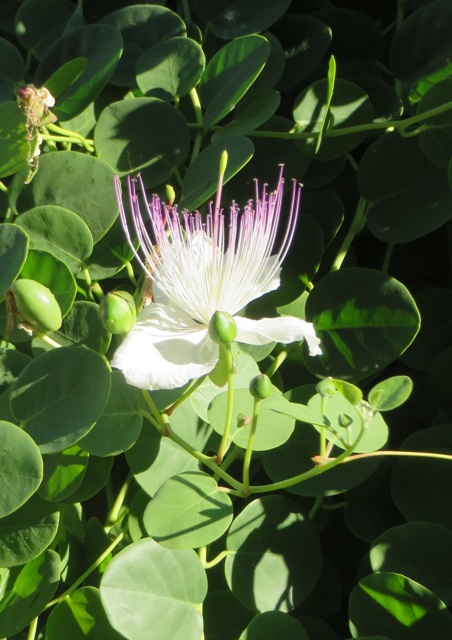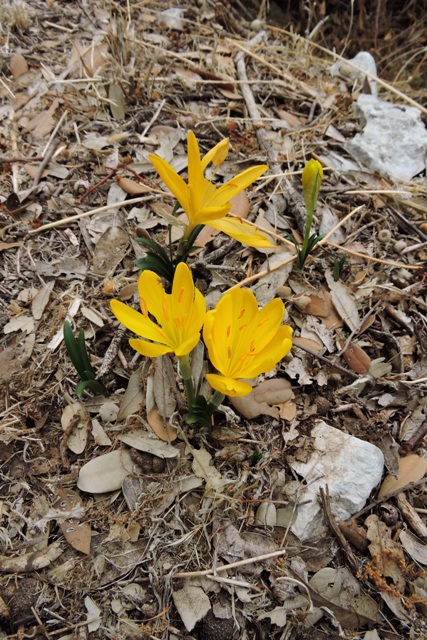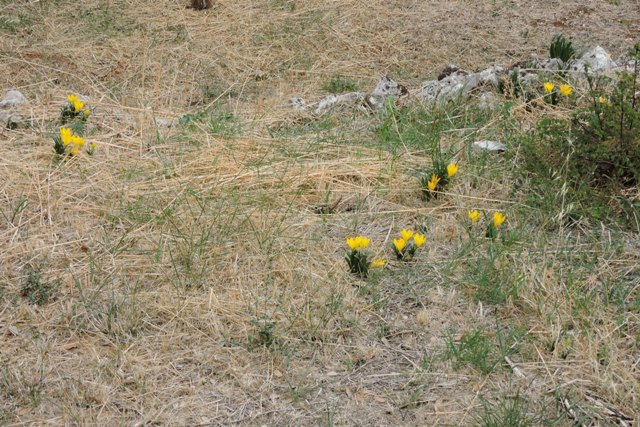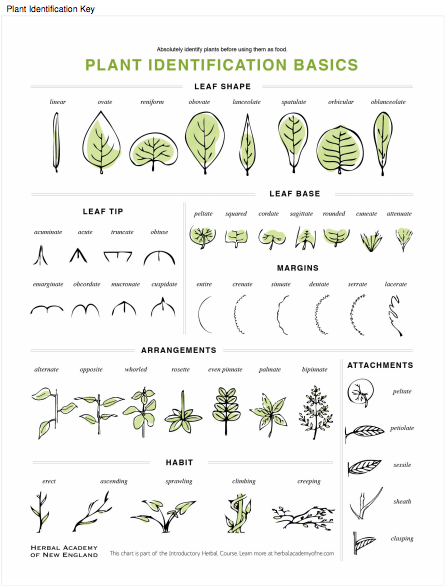Less then 100 metres from my gate
This week: A long time ago, in a far away place; Going round in circles; Village capers; Holes in walls; Less then 100 metres from my gate; Down the rabbit hole again; Looking back;

I am surprised sometimes by the way that some large scale natural disasters achieve world wide coverage and yet others go unnoticed by the international media.
Then small scale disasters like the current volcanic eruption on Las Palmas get wall to wall coverage, presumably because they are photogenic.

A very good description of what is happening in the Canary Islands can be found on the English EL PAÍS website.
There has been almost no coverage, even locally of the 4.8 earthquake which shook Dol this week. But then there is no damage, no injuries, so nothing to see here…….
In the summer, huge swathes of Southern Italy were on fire and large towns were cut off.
On the island of Sicily, the fires reached the parasols and sun loungers of the Mediterranean beaches.

It took several weeks before European media picked up on the enfolding disaster.
This week almost the length and breadth of Italy has been deluged by a single, intense storm system. The rains which flooded southern France were reported, but as the same storm system moved east, it was forgotten.
The people of Italy are unlikely to forget this devastating storm any time soon. This is because in many places six months or more of rain fell in twelve hours.
Blitzortung reported an incredible 467,742 lightning strikes, almost half a million.

There have been photographs of the rare phenomenon of twin rotative vortices, tornadoes, spawned by the massive storm.

Areas of Italy received 1,000 millimetres (that’s NOT a typo – I do mean one thousand millimetres) of rain in a 36 hour period this week.
That is 1,000 litres of rain per square metre, or a cubic metre of water.
Imagine a cube of water measuring a metre wide and deep, by a metre tall, on EVERY square metre, or square yard of ground.
I am surprised that this has not rated a mention in the international press.
This is climate breakdown in action, but are we becoming so inured to these climatic disasters that we are no longer interested in reading about them?
A long time ago, in a far away place….
In all of Europe, as in most countries worldwide, rainfall is measured in millimetres. However in Italy and here in Croatia, it is described as the number of litres received per square metre of land.
One millimetre of precipitation, falling on one square metre of land equals 1 litre of water per square metre and it weighs 1 kilogram. That is the advantage of the Metric system of integrated measurements.
For someone working in Imperial measurements, you can probably visualise what a square yard looks like. It is actually slightly less than a square metre.
In this photo the yellow square is exactly one square metre. The black pencil line is a square yard.

A square yard is 1,296 sq inches. A square metre is 1,550 sq inches, so 256 square inches larger in area.
But can you visualise a ¼” of rain, (4.5 mm) falling on the square yard of land?
I had to resort to the internet to try and give readers the Imperial visualisation of a millimetre of rain on a square metre and it doesn’t work.
A ¼” of rain on a square yard is one exactly one British gallon (US gallons are different). This is 8 pints or 4.5 litres of water.
Now my head hurts, so I think I’ll stick with 1 mm on 1m² equalling one litre. I can understand that.
Below I have created the calculation visually. The Pyrex jug contains exactly one litre of water. If that was spread evenly within the yellow square it would be exactly one millimetre deep over the whole area.
If you filled four and a half of those jugs and spread the contents within the black outline, it would cover a depth of exactly a ¼” . In the background is a standard British one gallon oil tin, holding 4.5 litres.

Imagine a cube of water measuring a metre wide and deep, by a metre tall, falling as rain on EVERY square metre, or square yard of ground around your home and on the roof too!

A long time ago, in a far away place I was issued with this six foot steel rule, to be carried when on duty.
I had to really hunt around to find it to create the one square yard. But I knew it would come in useful one day…..

Going round in circles
The sun is still warm here in the Adriatic. Hardy souls are still swimming in the sea (which is warmer than the North Sea ever gets around the UK) and there are many other advantages to living here.
There are also a few problem which residents experience. I tend to gloss over these and rightly so.
This is because on balance any disadvantages are far outweighed by the many advantages.
One circle was completed this week and I am right back to the point where I started when I moved here.
Within a day of me arriving to live on the island, I applied at the local police station to become a permanent resident. On the same day I applied for a fixed telephone line.
Despite BREXIT, I have my permanent residency. This was renewed recently for 10 years after being exchanged for the temporary five year card.
However I still have no telephone line, despite there being a working Hrvatski Telekom box on my wall.

As time passed, I have been comprehensively lied to by Hrvatski Telekom staff, who every time when I went to their main office in Split, kept telling me that they could see my application in the system. But no engineer has ever called to connect the line.
During one of my restoration efforts, I removed the old telephone wire and box from inside a wall.

This is a bad mobile telephone reception area and inside my home, I am unable to get a mobile signal. This was the reason why I had a satellite internet system installed.
This past year, the satellite service has reduced the bandwidth but not the monthly price of 670 HRK, equivalent to €100 a month.
So after receiving no answers from Hrvatski Telekom I made a complaint with the help of HUZP, the consumers organisation in Zagreb.
I have received a letter this week which is the end of my appeal to Hrvatski Telekom. It seems they cancelled my line application, without telling me, because there are no spare lines and they will not pay to upgrade the service to the village.
The company suggestion is that I get a mobile internet service!
The ONLY person who has been truthful with me is one of the Telekom engineers who I saw in the street, working at the wall box.
He actually told me that the staff in the Split Hrvatski Telekom office were telling me lies and that I would never get a line until someone dies. He told me that there are no spare lines and the company will not upgrade the infrastructure.
The difficulty I have with the solution the company proposed this week is that I have no mobile signal inside my home, so a mobile signal solution is not going to work.
So I have come full circle. I’m really not sure what I do next…..
Village capers
Walk around streets here in towns and villages and you will see a variety of plants growing from walls. They sprout out of crevices, from any gap small enough to allow a seed to take root.
One plant which few non-locals recognise is Capparis Spinosa, the Caper bush.

The flower is a really spectacular bloom, appearing in succession between May and July.

Those little tiny capers which you will see in a jar on your supermarket shelf are the conical flower buds, pickled in a red wine vinegar. They also appear, chopped up, in Tartare sauce.

Capers have been a staple of the Mediterranean diet for Millenia.
However quite which tribe of people first thought of eating a tiny flower bud, or using wine which had spoilt as a pickling medium is unknown.
In January 2020 I wrote in my blog about taking some cuttings from a caper plant to try and get them to grow.
This was another of my horticultural failures. Despite doing everything properly, none of the cuttings rooted. I didn’t try again this year for reasons I cannot now recall.
What I did see this summer though, was that on one of the plants in a wall very close to my home, a couple of seed pods had formed.
I’ve been keeping my eye on them and wondering when the best time to pick them would be.
This week as I walked past, I saw one pod had split open and there were black seeds inside, so I collected the pod and brought it home.
I always store seeds in paper packets, that way they don’t get mildew.
Before putting seeds into paper packets though, I air dry them on kitchen paper towels. So I scooped the seeds out of the pod and onto some towels and then thought I would look at how to germinate and grow them.

There are a number of articles online about how to get dried Caper seeds to germinate. Reading through them, I was struck by a single line, in one article. “Unless you have extremely fresh seed, Caper seeds are notoriously difficult to germinate.”
There is actually nothing written about germinating fresh seed, I presume because so few people have any access to “fresh seed”.
You do not get much fresher that straight from the pod, on the plant.
I immediately went and scooped up the seeds I had carefully laid out on the kitchen paper to dry and put them and their protective membranes back in the pod. I covered them with cling film so they don’t dry out.

There is another seed pod on the plant, which has yet to ripen. So I need to keep an eye on it, but I decided to plant some of this seed straight away.
In the village, the plants grow from limestone walls, so they obviously like alkaline growing conditions. I gathered some free draining soil, a couple of handfuls of sand and after mixing together, filled some small plant pots. I watered these and left the medium to soak.
Meanwhile, I also thought about trying the “au natural” approach. These plants in the village have not got there because someone has planted them.
Rather it is because an insect or bird has dropped a seed, which has found the ideal conditions in which to germinate.
I have an abundance of dry walls, several of which receive the full onslaught of the Mediterranean summer sun, so I went in search of some cracks.
Holes in walls
When you don’t look for things, you just don’t see them!
It was only when I went looking for some suitable places to drop a couple of seeds, that I realised just how many crevices there are in my dry stone walls.
The walls are certainly very dry. There were the dried stems of of Parietaria judiaca which I recognised.

These weeds have clearly taken root and then have succumbed to the drought and heat this summer. Some plants I was able to pull out completely, one or two still had some live roots and needed a little more “persuasion”.

I decided I would hedge my bets with these very fresh seeds. Who knows, I can perhaps write the book of how to deal with fresh Caper seeds, rather than the dried variety!
Analysing where I have seen capers growing they are on east, west and south facing walls. Anywhere in fact except north facing walls.
So there is my first problem. My old walls are all terraces on a north facing slope. I can find some corners which are east or west facing, but that is all.
The plants seem to grow anywhere from the top to the bottom of the wall, but presumably where there is some retained moisture.
What I also noticed when I was pulling half-dead weeds from the walls was that in one or two places there are signs of new growth, mainly ferns and some moss. So there must be some moisture there even before the autumn rains arrive.

These locations seemed like a good place to start. So with a small trowel I spooned some of the coarse grit and loam mixture into the various apertures.
The week’s weather forecast came into play here.
I was aware that we were likely to have rain from Wednesday, so I decided that I would keep the seeds damp, in a dark place and allow the rain to naturally irrigate the various spaces in the walls.
Between showers on Friday, I put two seeds into each of six fissure. Each group of seeds was then lightly covered with more of the gritty loam.
Meanwhile the small pots also had seeds placed in them, lightly covered and dampened with a spray before I put them into the propagator.
The propagator is a permanent resident of my greenhouse workbench and at the moment is at 25ºC because it is south facing.
If and when some or any of these seeds in pots germinate, I will be able to put them into some of the big voids in my stone walls.
So what is the worst case scenario? Well, I suppose it is that none of the seeds are viable and none germinate.
The second worst case scenario, is that all the seeds I planted outside, and all the seeds in pots germanite and I have more Caper plants than I know what to do with!
Only time will tell…
Less then 100 metres from my gate
It should have rained on Wednesday morning only it didn’t. We had clouds, interspersed with sunshine and I counted a full eight drops of rain that had fallen at one point.
This was the remnants of the storm which battered Italy all day on Tuesday.
I had planned an indoor day, but took the opportunity of fine weather to do one or two jobs outside.
Then with the rain still holding off, I decided I would have a wander through the Maquis, for some fresh air and because, according to the forecast, the rest of the week was to be wet.
Up towards St. Michael’s Church, I found one of the trees I have been keeping an eye on.
This specimen has pitchers which attract flies and insects. I’ve missed seeing the flowers this year, but there were a couple of pitchers.

Coming back down, I took some photographs of a couple of other shrubs I’d like to identify. Then reaching my gate, I was welcomed by Pongo (I had given him the slip earlier) and he was crying, wanting to go for a walk.
So I followed as he headed off in the opposite direction.
A flash of bright yellow caught my eye as I headed east. This was up a steep path which leads to some olives which are owned by a neighbour.
Pongo was racing ahead chasing small, brightly coloured Brown Argus butterflies, Aricia agestis.

So I followed him up the steep path and discovered a lot of brilliant yellow Autumn Crocus.

They are less then 100 metres from my gate and yet I have never seen them before, but clearly by the number they have always been there, hiding in plain sight.

Although commonly called an autumn crocus, they are actually part of the Narcissus family and are a Daffodil. These are Sternbergia lutea. This wild flower is a protected plant in Croatia.
Continuing up the path, there were clumps of them all over, especially on terraces where there are some olive trees growing.

They are the only Sternbergia I have seen around the village, I presume because they are mostly hidden to passers by, so no one has come along and dug up the bulbs to take home.
It did make me think that perhaps I should walk the same small section of my local paths, every week, throughout the year and to properly survey and record everything which I see.
Down the rabbit hole again
There are some excellent books available on Mediterranean wild flowers, together with websites like the one called Go Hvar run by a neighbour in Vrboska. However I can find no comprehensive survey of the wild flowers and plants you will find when walking around Dol.
A couple of years ago (blog 2018/43) I wrote about finding a “Pitcher plant” or more correctly “pitchers” on a shrub.
This week, as I have already mentioned, I’ve found some more. I also thought I had come close to identifying what the shrub is called.
Going through my photo archive, it is always October when I notice and photograph the “pitchers”. I have looked for the flowers in spring but have never spotted them.
On a very rainy Thursday morning, I disappeared down an internet rabbit hole again.
Rather like the rabbit hole that Alice went down, an internet rabbit hole can lead you to a labyrinthine structure of exciting websites and interesting page links. There are also dead ends too!
To properly identify a wild flower, shrub or tree, you need to have a really detailed description of the plant.
I’m using the term “plant” here in a generic way to describe in this case what is a large shrub or small tree.
I tend to start with the leaves, as they are usually the most obvious and easy to describe, followed by flowers, fruit, bark and the form or shape of the plant.
The botanical illustrator and artist Lizzie Harper has a simply brilliant website, all about sketching, drawing and painting plant specimens. If you don’t follow any other link this week, this one is worth looking at. Here Lizzie describes identifying different leaves.
The shape or form of a plant is the least reliable way to identify it because a plant’s growth will vary with its location and age.
In Botany there are standard ways to describe leaves, flowers and fruit. These start with “is the plant evergreen or deciduous?”.

This week I have had a close look several times at “my” plant / tree.
The form can only be described as ‘tortured’ with it’s appearance being rather like a Corkscrew Hazel.
There are several specimens of different sizes, but only two have “pitchers” visible and the plant in the photo is about six metres tall.

The leaves are pinnate with five or seven opposing pairs, ending in a leaflet. The berries are small, red and egg shaped.
So armed with all this information, I thought I had identified it as a Pistacia terebinth, or Turpentine tree. In Croatian the name for the tree is Smrdljika, or Smelly.
Various Mediterranean plant books of mine describe the leaves, bark and seeds as ‘strong smelling’. Websites back this up, so on another walk I took some leaves, stripped away a small piece of bark and picked some unripe berries.
None had any smell at all, so it could not be described as “strong smelling”.
One point of identification I found online was that the plant commonly forms leaf galls in response to an insect biting its leaves.
I certainly found a number of galls on the edge of some of the leaves. This led to another branching tunnel off the rabbit hole called Cecidology.

Likened to tumours in mammals, plant galls are often highly organized structures rather than random growth. This applies particularly to some Galls caused by insects and mites.
The scientific study of plant galls is known as Cecidology.
There is even a British Plant Gall Society. Whilst in America a number of the State Agricultural Extensions and universities study these plant deformations in specialist centres.
I did discover that the Terebinth is a dioecious tree, being either a male or a female.
As the plants with the “pitchers” are a long way from each other, my next quest is to try and “sex” the two plants and see if they are the same.
What I’m wondering, is whether the pitcher is the plant’s response to an insect and if it is a type of highly specific gall.
As we are now well into autumn and both the examples I have found are on exposed limestone hillsides at around an altitude of 150 metres amsl, perhaps they only smell in the spring when the sap is flowing?
Re-emerging into fresh air and daylight, or more precisely into a damp and early dusk on Thursday, I’m going to have to do more research into these plants.
However in the meantime, if there is a Cecidologist reading this, please do get in touch. NCG
Looking back – Week 40
This is the start of the weekly section, with links to past issues of the blog.
2014/40 I’ve started, so I’ll finish

2015/40 Dig every thing up and what grows back is a weed

2016/40 What to do when it rains? Make cheese!

2017/40 Is there a Spoor expert in the house?
2018/40 Autumnal colours

2019/40 Catching the slow train

2020/40 Only nine lives
